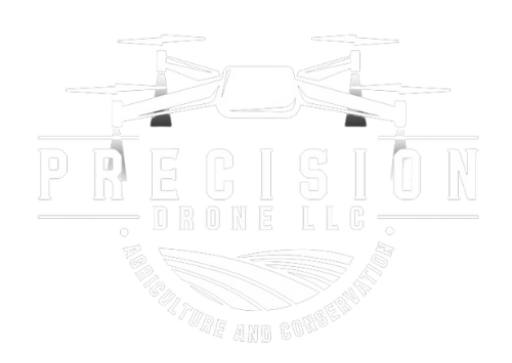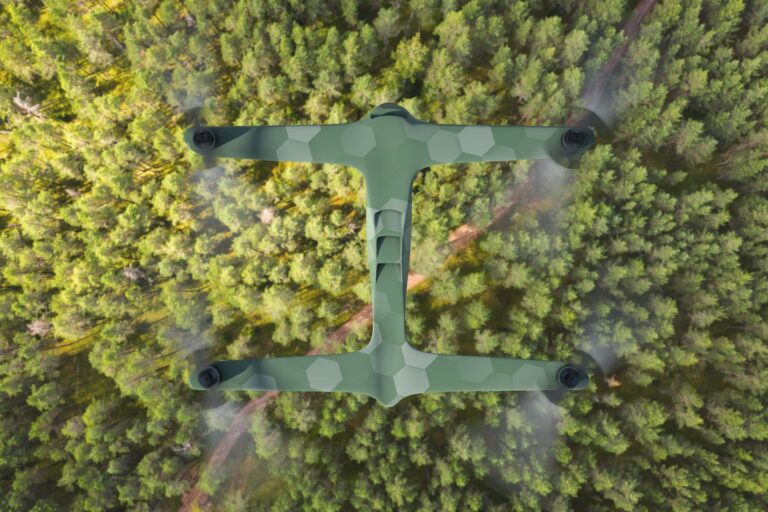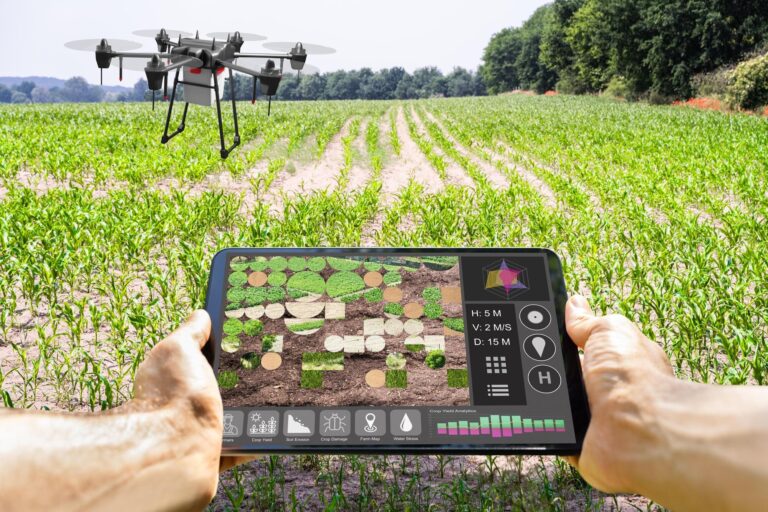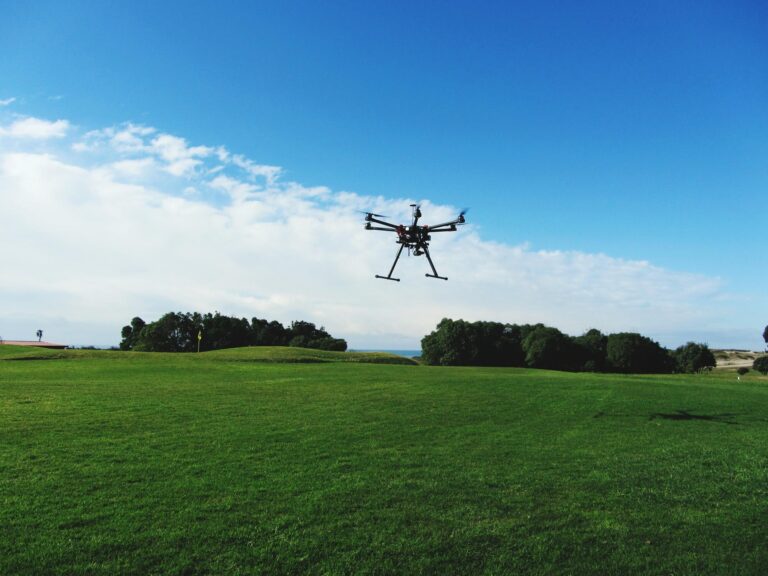From Land Surveying to Aerial Mapping: How Drone Technology is Reshaping Land Development
As the world of land development continues to evolve, drone technology stands at the forefront, transforming traditional methods with remarkable precision and efficiency. At Precision Drone LLC, we are pioneering this change by offering advanced aerial mapping and drone land surveying services that are reshaping the landscape of agriculture and environmental management across Michigan. Using cutting-edge drone technology, we provide detailed 3D terrain modeling and multispectral imaging that empower farmers and land developers with data-driven insights for better decision-making. From precision spraying that reduces chemical waste to comprehensive environmental surveying, our services are designed to enhance productivity and sustainability in every aspect of land development. Join us as we delve into how our precision drone services are revolutionizing the industry, offering unparalleled accuracy and care for a more sustainable future.
The Rise of Drone Technology
Drone technology has rapidly advanced, revolutionizing numerous industries by enhancing efficiency and precision. In land development, drones offer innovative solutions that transform traditional practices. They enable accurate data collection and analysis, which are critical in agriculture and environmental management. As drones become more accessible, their integration into land surveying and aerial mapping is becoming indispensable.
Evolution of Land Surveying
Land surveying has evolved significantly from manual measurement techniques to highly automated processes, thanks to technological advancements. Traditionally, surveyors relied on tools like theodolites and measuring tapes to map land. These methods were labor-intensive and time-consuming. Drones have now streamlined the process, offering quick and accurate surveys.
Surveyors can now cover large land areas in a fraction of the time, allowing for more frequent updates and better resource allocation. The use of LiDAR and GPS has further enhanced precision, making it possible to capture minute details that were previously unattainable.
The transition from traditional to drone-based surveying is driven by the need for efficiency and accuracy. As a result, industries are investing in drone technology for better surveying practices, ultimately leading to improved planning and development.
Introduction to Aerial Mapping
Aerial mapping involves capturing high-resolution images from the sky to create detailed maps. This method has gained traction due to its efficiency and ability to provide a comprehensive view of large areas.
With drones equipped with advanced cameras and sensors, aerial mapping has become more accessible. These devices can fly at various altitudes, capturing images that are stitched together to form coherent maps. Compared to satellite imagery, drone mapping offers higher resolution and more current data.
Industries like agriculture, real estate, and forestry are leveraging aerial mapping for better land management and planning. The ability to monitor changes over time and make informed decisions has transformed how these industries operate.
Benefits of Drone Integration
Integrating drones into land development offers numerous benefits, including cost reduction, efficiency, and improved accuracy. Drones minimize the need for manual labor, cutting down operational costs and reducing human error.
-
Enhanced Data Collection: Drones collect comprehensive data quickly, allowing for real-time analysis and decision-making.
-
Improved Safety: Drones can operate in hazardous environments, reducing risks to human surveyors.
-
Scalability: Drones can easily cover vast areas, making them suitable for large-scale projects.
Moreover, the data collected by drones supports environmental conservation efforts, ensuring sustainable practices in land development.
Precision Drone Services in Agriculture
In agriculture, precision drone services have become vital for optimizing crop production and ensuring sustainable practices. Drones provide farmers with detailed insights into crop health, soil conditions, and resource allocation. This data-driven approach enhances productivity while minimizing environmental impact.
Crop Monitoring with Multispectral Imaging
Multispectral imaging is a powerful tool in agriculture, enabling farmers to monitor crop health in detail. Drones equipped with multispectral cameras capture images at different wavelengths, revealing insights invisible to the naked eye.
This technology allows for the detection of nutrient deficiencies, pest infestations, and water stress in crops. By analyzing these images, farmers can implement targeted interventions, resulting in healthier crops and improved yields.
Multispectral imaging also supports precision agriculture, where resources like water and fertilizers are applied only where needed. This targeted approach reduces waste and promotes sustainable farming practices, benefiting both the environment and farmers’ bottom lines.
Drone-Based Precision Spraying
Drone-based precision spraying offers a revolutionary approach to applying fertilizers, herbicides, and pesticides. This method ensures even distribution, reducing chemical waste and environmental impact.
-
Precision Targeting: Drones can be programmed to spray specific areas, minimizing overuse of chemicals.
-
Efficiency: The automated process covers large fields quickly, saving time and labor costs.
-
Reduced Environmental Impact: Precision spraying reduces runoff and chemical drift, protecting surrounding ecosystems.
By adopting drone-based spraying, farmers can optimize input usage, promoting sustainability and cost-effectiveness in agricultural operations.
Enhancing Yield and Sustainability
Drones play a crucial role in enhancing agricultural yield and promoting sustainability. By providing real-time data and insights, farmers can make informed decisions about crop management.
-
Increased Efficiency: Drones streamline operations, allowing for faster data collection and analysis.
-
Sustainable Practices: Targeted interventions and resource management reduce environmental impact.
-
Improved Yields: Timely detection of issues like pests or water stress enables quick responses, safeguarding crop health.
Through precision drone services, agriculture becomes not only more productive but also environmentally conscious, aligning with global sustainability goals.
Environmental and Conservation Efforts
Drones are instrumental in environmental and conservation efforts, offering non-intrusive methods for data collection and analysis. Their ability to access remote and challenging terrains makes them invaluable for monitoring ecosystems and wildlife.
Non-Intrusive Environmental Surveying
Environmental surveying traditionally involved intrusive methods that could disturb natural habitats. Drones offer a non-intrusive alternative, capturing data from the sky with minimal impact on the environment.
-
Remote Access: Drones reach areas difficult for humans to access, ensuring comprehensive data collection.
-
Minimal Disturbance: High-altitude flights reduce interaction with wildlife, preserving natural behaviors.
-
Comprehensive Data: Drones provide high-resolution imagery and data, supporting accurate environmental assessments.
These surveys aid in habitat preservation and resource management, promoting sustainable conservation practices.
Supporting Conservation Initiatives
Drones support various conservation initiatives by providing essential data for habitat restoration and species protection. They enable the monitoring of wildlife populations and the assessment of environmental impact.
With drones, conservationists can track changes in ecosystems over time, identifying trends and threats early. This proactive approach allows for timely interventions, ensuring the protection of endangered species and habitats.
The use of drones in conservation is a testament to their versatility and potential in supporting sustainable development and ecological balance.
Wildlife Tracking and Habitat Protection
Wildlife tracking is crucial for understanding animal behaviors and movements. Drones offer a non-intrusive way to monitor wildlife, providing insights into migration patterns and habitat usage.
-
Real-Time Tracking: Drones equipped with thermal cameras track animals without disturbing them.
-
Data Collection: High-resolution images help identify individual animals and monitor health.
-
Habitat Analysis: Drones assess habitat conditions, informing conservation strategies.
By facilitating effective wildlife management, drones contribute to habitat protection and biodiversity conservation, ensuring ecological integrity.
Advanced Aerial Mapping Techniques
Advanced aerial mapping techniques have transformed how land assessments and infrastructure planning are conducted. Drones equipped with high-resolution cameras and sensors enable detailed 3D mapping and modeling, offering insights that drive informed decision-making.
3D Terrain Modeling Innovations
3D terrain modeling has become a cornerstone of land development, providing detailed topographical data for planning and assessment. Drones collect high-resolution images that are processed into 3D models, offering a realistic view of the landscape.
These models are invaluable for identifying elevation changes, potential flood areas, and construction challenges. Industries like construction, agriculture, and urban planning leverage 3D models for better resource allocation and risk management.
The accuracy and detail provided by drone-based 3D modeling have set new standards in land assessment, leading to more efficient and safer development projects.
Land Assessment and Infrastructure Planning
Accurate land assessment and infrastructure planning are critical for successful development projects. Drones offer a cost-effective and efficient solution for gathering data necessary for these processes.
-
Data Collection: Drones capture high-resolution images and topographical data quickly.
-
Analysis: Advanced software processes the data, offering insights into land conditions and potential challenges.
-
Decision-Making: Planners use this information to design infrastructure that aligns with environmental and regulatory standards.
The integration of drones in land assessment ensures sustainable and efficient planning, minimizing environmental impact and optimizing resource use.
Data-Driven Decision Making
Incorporating drones into land development supports data-driven decision-making, enhancing accuracy and efficiency. Drones provide up-to-date data, enabling stakeholders to make informed choices grounded in real-time insights.
-
Real-Time Updates: Drones offer continuous monitoring, ensuring data relevance.
-
Enhanced Accuracy: High-resolution imagery supports precise assessments and planning.
-
Informed Strategies: Data-driven insights facilitate proactive decision-making, reducing risks and improving outcomes.
By leveraging data collected by drones, industries can achieve greater efficiency and sustainability in their operations.
Future of Drone Technology in Land Development
The future of drone technology in land development promises continued innovation and integration across industries. As technology evolves, drones will play an even more significant role in enhancing efficiency and sustainability.
Emerging Trends and Innovations
Drones are at the forefront of technological innovation, with ongoing advancements expanding their capabilities. Emerging trends include autonomous flight, enhanced AI integration, and improved sensor technology.
-
Autonomous Flight: Drones capable of self-navigation reduce the need for manual control, enhancing efficiency.
-
AI Integration: Advanced algorithms enable better data processing and analysis, improving decision-making.
-
Sensor Advancements: New sensors offer more detailed data, supporting diverse applications across industries.
These trends underscore the potential of drones to drive further advancements in land development, promising a future of increased precision and efficiency.
Challenges and Opportunities
While drones offer significant benefits, they also present challenges and opportunities that industries must navigate. Key challenges include regulatory compliance, privacy concerns, and technological limitations.
-
Regulation: Navigating complex drone regulations is essential for safe and lawful operations.
-
Privacy: Ensuring data protection and addressing privacy concerns are critical.
-
Technology: Overcoming technological limitations and ensuring reliable operation are ongoing challenges.
Despite these challenges, opportunities abound in areas like sustainability, cost savings, and enhanced data collection, highlighting the transformative potential of drones in land development.
Enhancing Efficiency and Sustainability
Drones are poised to enhance efficiency and sustainability in land development significantly. By providing precise data and enabling informed decision-making, drones reduce costs and environmental impact.
-
Resource Optimization: Drones ensure efficient resource use, reducing waste.
-
Environmental Protection: Precision applications minimize ecological impact, promoting sustainability.
-
Operational Efficiency: Drones streamline processes, saving time and reducing labor costs.
As drones continue to evolve, their role in promoting sustainable development and operational efficiency will only grow, benefiting industries and the environment alike.






